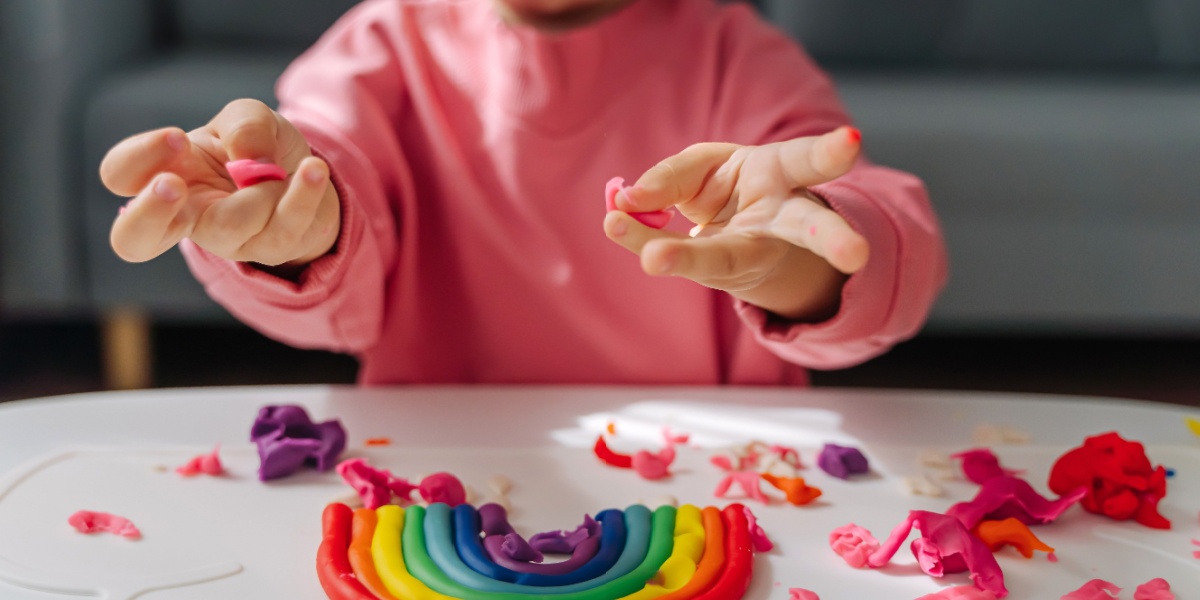
Share
What Is Sensory Play? Benefits, Ideas, and Activities for Learning
Learn how touch, sound, movement, and more help kids grow through play.
Table of Contents–Jump to Each Section
What Is Sensory Play? Definition and Examples for Kids
Sensory play is any activity that engages a child’s senses to support learning and development. This includes sight, sound, taste, touch, and smell, as well as the “hidden” senses of general body awareness and balance.
Characteristics of Sensory Play
- Interactive and hands-on
- Exploratory and immersive
- Creative and engaging
- Sometimes loud or messy
Sensory play starts almost as soon as a child is born born, as infants watch, touch, and listen to all the new stimuli around them. The first of the six stages of play, unoccupied play, is full of unstructured sensory play and exploration. It’s why babies seem to put just about everything in their mouth and grab anything new they see. Every sensory experience is new to them, and they use everything at their disposal to learn more about it.
As children get older, sensory play can become more structured, through activities specifically designed to stimulate the five senses, as well as build general body awareness. Parents and teachers can help by providing sensory activities and games throughout childhood, offering kids the chance to explore using their senses as often as possible.
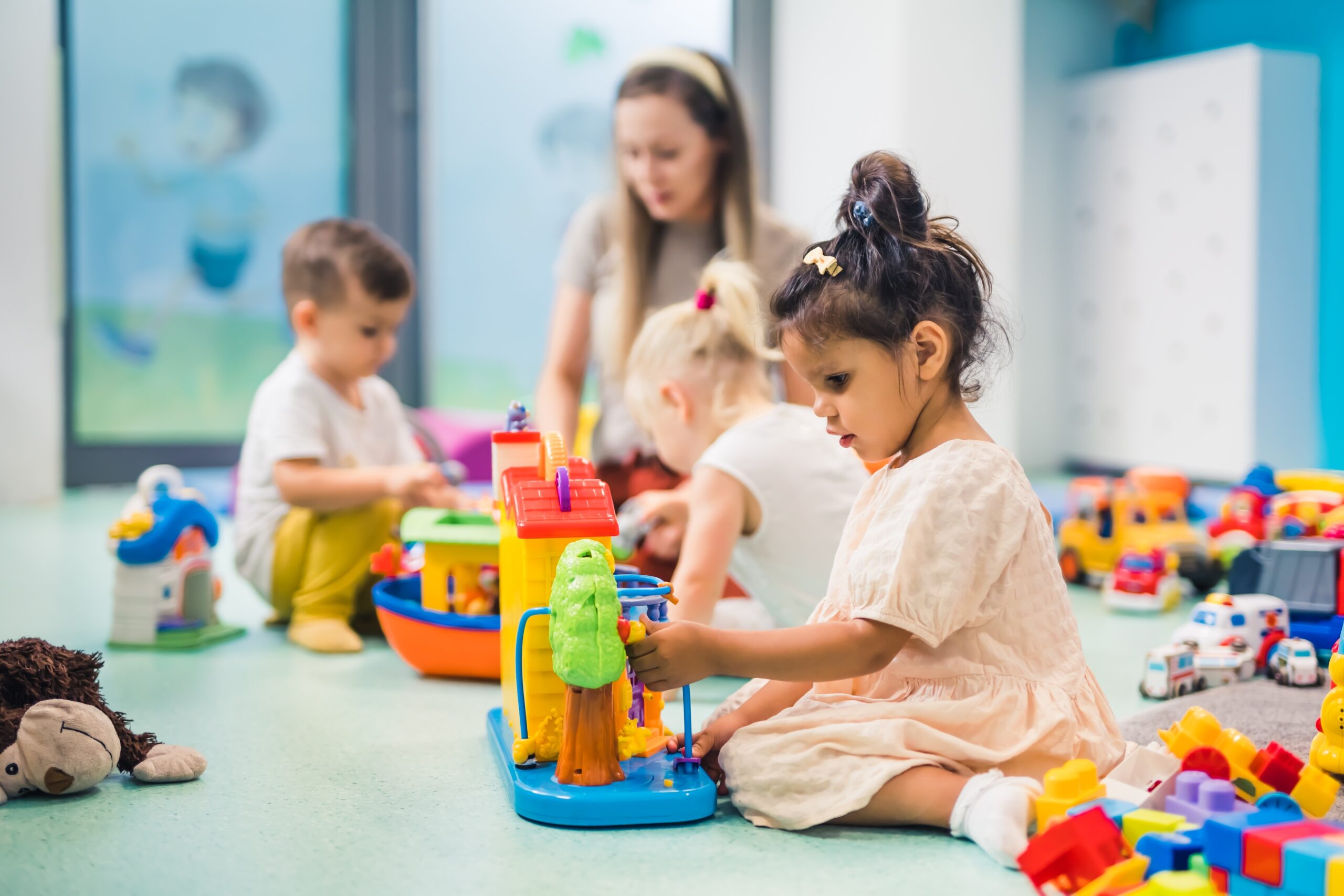
Research Behind Multisensory Learning
The multi-sensory theory suggests that engaging several senses at once—like sight, hearing, and touch—can make learning more effective and memorable. For example, this 2022 study determined that a “multisensory approach helps students link new information to prior knowledge and understand relationships between concepts.”
Additionally, research published in Frontiers in Education highlights that a “multi-sensory approach to processing not only enriches our comprehension of the received information but also ensures that learning is more robust and durable.”
Benefits of Sensory Play for Learning and Child Development
Sensory play helps the brain develop neural connections, building the foundations for learning and self-regulation. According to a report from Harvard University’s Center on the Developing Child: “Appropriate sensory input (e.g.,through hearing and vision) … build[s] healthy brain architecture that provides a strong foundation for lifelong learning, behavior, and health.”
A wide range of sensory experiences supports development of important skills and abilities like these:
Gross and Fine Motor Skills
In a 2024 study published in Brain and Behavior, scientists noted, “Motor and sensory developments are intertwined during infancy and early childhood. Sensory feedback guides improving movements and coordination; sensory experiences provide essential input for motor skill acquisition.”
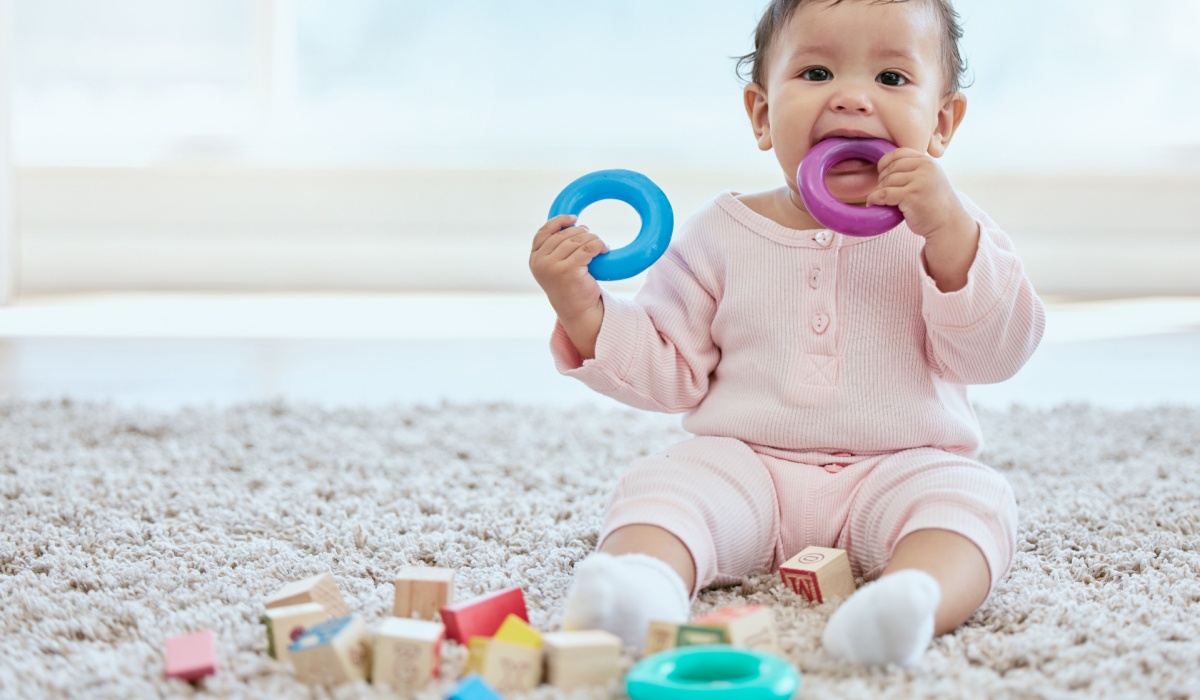
Their research shows that infants and babies who lack sensory experiences may face motor skills challenges and deficiencies as they get older. Babies track objects with their eyes, then begin to reach out and learn to grab, pinch, and manipulate. Sensory input spurs them on to learn and move, first crawling and then walking.
TIP: Providing children with sensory play opportunities right from the start encourages strong gross and fine motor skills as they grow.
Emotional Regulation
The link between emotions and sensory input is obvious to many of us: a few notes of a song can take us back to a school dance decades earlier; the smell of ginger and cloves instantly transports us back to our grandmother’s kitchen at the holidays. We not only experience the memories tied to those sensations—we also experience the emotions.
A 2023 report in Trends in Cognitive Science states, “Research indicates (i) the process of sensation is inherently emotional; (ii) sensation-driven emotion can be deliberately harnessed; and (iii) sensation relatively effortlessly activates emotional processes. Together, this work suggests that sensation constitutes a tool that people can use to deliberately manage their emotions.”
In other words, the way we perceive the world using our senses is directly tied to how we feel. What’s more, we can use our senses to help understand and, in turn, regulate our emotions. This is an incredibly challenging skill for most people to develop—it starts in early childhood and essentially continues throughout our entire lives.
TIP: Sensory play can be both stimulating and calming. Through this kind of play, kids learn how various types of sensory input affect their own emotions (it’s different for everyone) and can find ways to use their senses to manage difficult emotions and big feelings.
Language Development
Learning to talk is a complex process. It involves not only the ability to manipulate your mouth and tongue muscles to produce the appropriate sounds, but also an understanding of the meaning of words themselves. In their preschool years, children build their vocabulary at an astonishing rate. Studies show that by age one, children recognize about 50 words; by age three, they recognize about 1,000 words; and by age five, they recognize at least 10,000 words!

During sensory play, children encounter new experiences that require new words to describe them. It’s much easier to experience something that’s “squishy” than to try to define it.
TIP: Encourage your child to describe what they encounter using their senses to help build a stronger vocabulary as they grow.
Sensory Processing
In recent years, medical science has started to recognize and understand the major impact of sensory processing disorders (SPD). Some people are hypersensitive to sensory input and are easily overstimulated to the point of being unable to function. Others have difficulty making sense of sensory input, which can make daily life feel confusing and uncomfortable. SPD is often observed in individuals on the autism spectrum or those with ADHD and can also contribute to anxiety.
In sensory play, children with SPD can experience sensory input in a safe and controlled environment. Over time, they can develop tolerance for otherwise uncomfortable experiences or learn the adaptations they’ll need to thrive. Sensory play can also help kids learn to better understand what their senses are telling them, an important skill that doesn’t come naturally for all. It’s often used by occupational therapists to treat SPD.
Types of Sensory Play
There are five types of sensory play related directly to our five senses, plus two more that correlate with our body overall. Read through this overview of each type, then apply them with our list of 15+ Sensory Play Activities for Kids:
Tactile Play
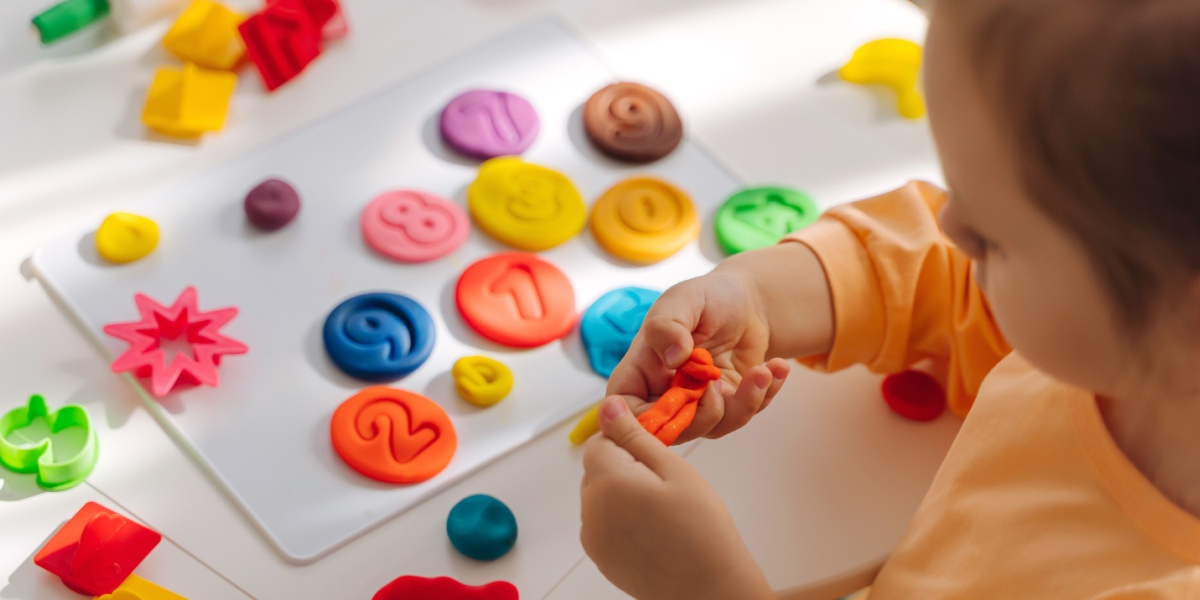
Tactile play is all about touch and the way we experience the world through the sensory receptors in our skin and other parts of the body. This can include textures, temperature, pressure, and vibration.
Through tactile play, kids develop fine motor skills by grabbing, pinching, and otherwise manipulating materials. They also pick up new vocabulary to describe what they’re experiencing: soft, rough, squishy, sticky, etc. Tactile play helps develop emotional regulation, as many calming and soothing behaviors are tactile, such as stroking soft fur or receiving a hug.
Examples of Tactile Play:
- Running fingers through sand, rice, or beans
- Splashing in warm or cold water
- Squishing and building with playdough
Visual Play
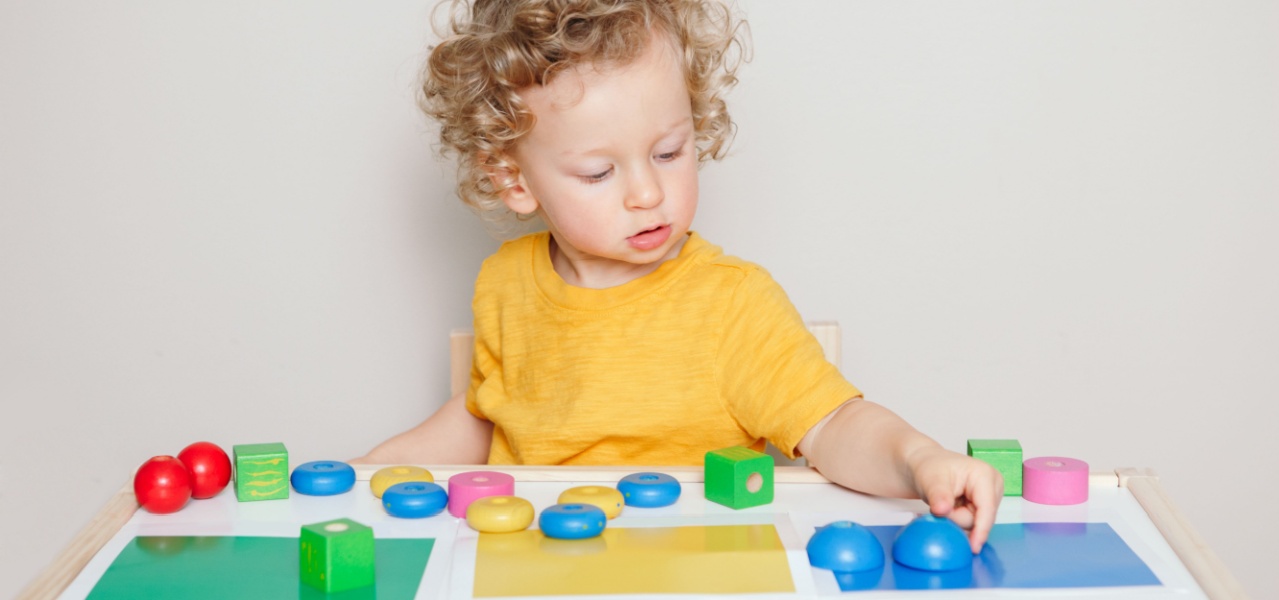
Visual sensory play uses the eyes, or child’s sense of sight. In visual play activities, children explore colors and patterns, shapes, visual tracking and focus, and spatial awareness. Visual play can help strengthening how children process and respond to what they see, which supports their ability to read, write, solve problems, and more.
Examples of Visual Play:
- Watching mobiles, ceiling fans, bubbles, or pinwheels
- Sorting objects by size, shape, or color
- Solving “hidden picture” puzzles
Auditory Play
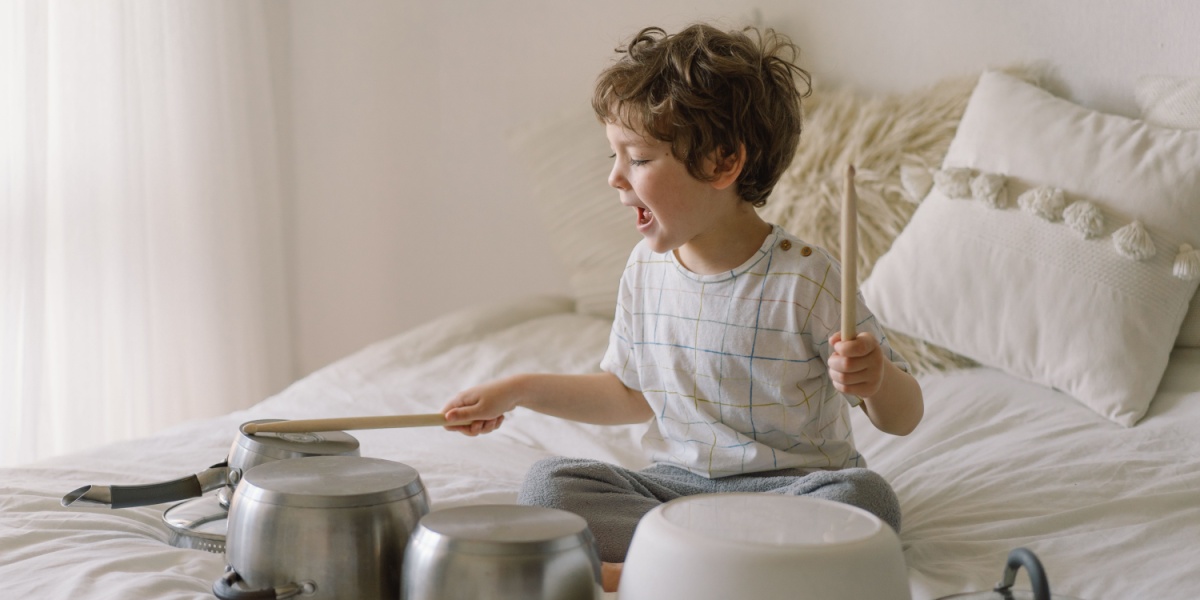
Auditory play explores the sense of hearing using our ears. It’s a vital form of play for speech and language development—the ability to discern various sounds allows children to begin imitating them. Auditory play also helps kids learn to read, develop a sense of volume, pitch, and rhythm, and become active listeners.
Examples of Visual Play:
- Making noise by banging objects together
- Singing along or playing instruments while listening to music
- Listening to and identifying nature sounds
Olfactory Play
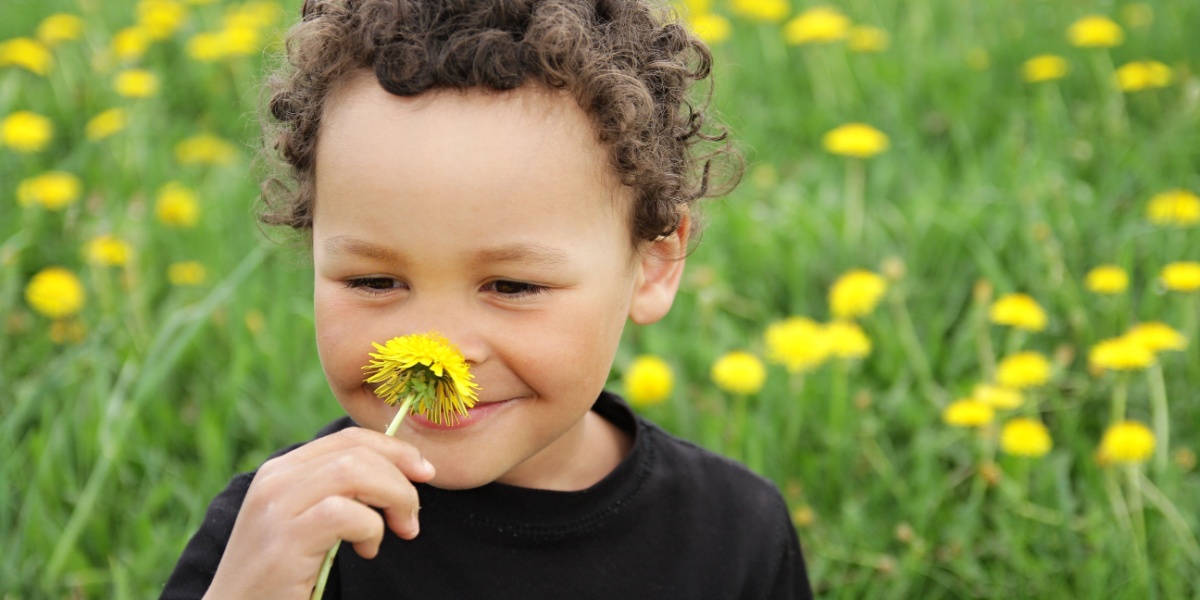
In olfactory play, kids use their nose and sense of smell. Research shows that smells and memory have a strong link, so strengthening our olfactory sense may also improve our memories.
Smell and taste are closely related as well, and our noses can help us know when something might not be safe (for example, the bad smell of rotting food tells us we shouldn’t eat it). Some fragrances can also have a soothing effect, improving emotional regulation.
Examples of Olfactory Play:
- Using scented markers or playdough
- Smelling the flowers and plants in a garden
- Playing “guess-the-scent” games
Gustatory Play
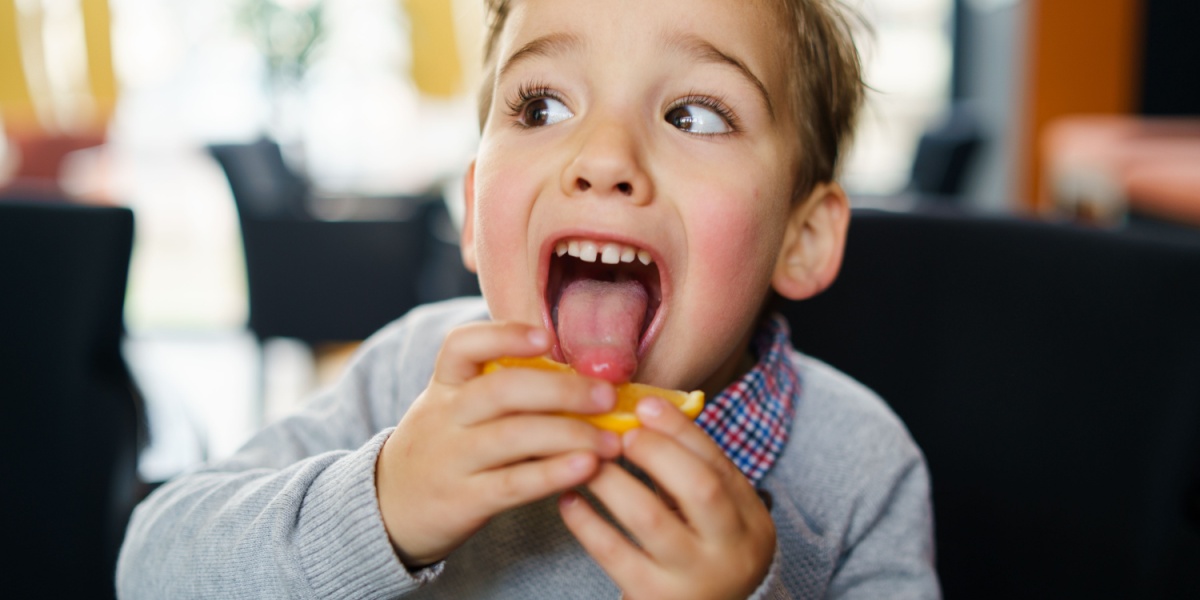
In gustatory play (also called taste exploration), kids explore various tastes using the receptors on their tongue. They learn to recognize flavors like sweet, sour, salty, bitter, and umami (savory or meaty).
Young children who experience a wide variety of flavors through diverse foods are less likely to become picky eaters as they get older. Gustatory play helps support oral motor development too, strengthening the muscles used for chewing and swallowing.
Note: In this type of play, it’s especially important to supervise children to ensure they are only putting safe items into their mouths.
Examples of Gustatory Play:
- Taste-testing games
- Trying new foods
- Experiencing unique textures (i.e. the smooth but stretchy texture of mochi)
Vestibular and Proprioceptive Play

These two types of sensory play are often overlooked, but they’re incredibly important. Vestibular play refers to balance and movement. It’s what enables us to learn to walk, ride a bicycle, or walk up or down stairs without falling over. Proprioceptive play refers to body awareness–where our body is in relation to the space around us, how heavy or light something is to lift, or the pressure we feel from outside objects (i.e. the strength of a hug).
Examples of Olfactory Play:
- Climbing trees
- Pulling a wagon up a hill
- Walking along a narrow log
Learn About Other Types of Play
Sensory Play Frequently Asked Questions (FAQ)
What is the purpose of sensory play?
Sensory play stimulates brain development, develops fine and gross motor skills, supports language development and communication skills, promotes emotional regulation, and encourages creativity and imagination. When children encounter new sensory experiences on a regular basis, they develop an awareness of their bodies as well as of the world around them.
What age is best for sensory play?
Sensory play is most important in early childhood (birth to age 6), but children of any age can benefit from it. It can be especially helpful for older children with neurological differences, like ADHD, autism, or sensory processing challenges.
How does sensory play help learning and development?
Research shows that sensory play has a direct effect on the development of the neural pathways in our brains. During the early childhood years, when our brains grow faster than at any other time in our lives, sensory experiences build and establish the cognitive pathways that enable us to learn, think critically, and communicate with others. It also promotes body and spatial awareness, balance, and hand-eye coordination.
What materials are best for sensory bins?
While you can use almost anything in sensory bins, be sure to choose those that are age-appropriate and safe. For very small children, watch for potential choking hazards since they tend to put everything in their mouths. Observe your child closely for any potential allergic reactions, and clean and sanitize materials regularly, especially if they’re used by multiple children. Common sensory bin items include uncooked rice and beans, popcorn kernels, sand, soil, flour, water beads, water and ice, rocks and pebbles, pompoms, fabrics and paper, scented items, and small toys and tools.
Can I do sensory play with children who have sensory sensitivities?
Yes, sensory play can help them develop a stronger tolerance for uncomfortable sensory experiences and learn to manage their emotional responses to sensory input. The key is to be flexible and responsive, limiting stimuli and respecting the child’s preferences and perceptions. If you have concerns, talk with your child’s pediatrician or health care expert.
Is sensory play appropriate for older children?
Yes. As kids get older, sensory play is especially helpful for both language development and emotional regulation. Using their senses helps kids develop a wider vocabulary as they look for words to describe their experiences. Plus, understanding how different sensory activities make them feel allows kids to narrow down the ones that cause them stress or provide a sense of calm. Sensory play also makes older children more observant of the world around them, expanding their horizons and increasing their tolerance for a variety of different ways to live.
Legal disclaimer: Any information, materials, or links to third-party resources are provided for informational purposes only. We are not affiliated with and do not sponsor/endorse these third parties and bear no responsibility for the accuracy of content on any external site. All information provided in this article is current as of May 2025.




